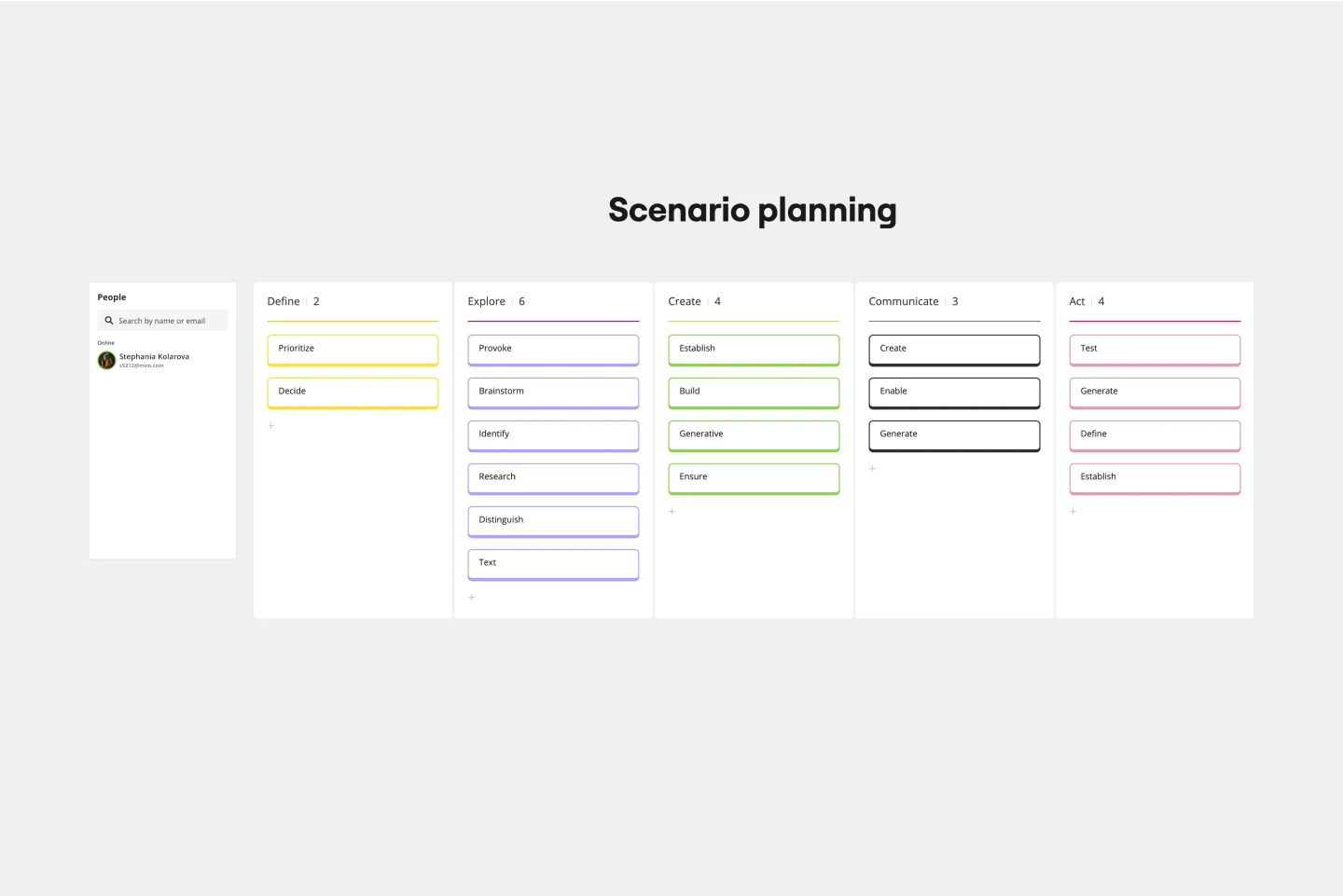About the Scenario Mapping Template
Scenario mapping is the process of outlining all the steps a user will take to complete a task. It generally includes notes about what users are thinking and feeling at each step. It can also include comments or information you feel is important for each step, questions or assumptions you have — as well as suggestions that come up as you go through this exercise.
Miro's scenario mapping template is divided into four quadrants to guide you through the exercise:
Steps (the structured framework of what is being done)
Doing (the practical application of the task)
Thinking (cognitive processes behind the task)
Feeling (emotional and subjective aspects)
When should you do scenario mapping?
Scenario mapping can be used both to outline the intended or ideal scenario (what should happen) as well as what currently happens.
If you’re trying to outline the ideal scenario, user mapping should take place very early on in a project and can help inform user stories and the product backlog. If you’re just trying to get a better sense of what currently happens, you can do scenario mapping when conducting user interviews or observation.
How do you use the scenario mapping template?
Scenario mapping is made simple with Miro's template. Follow these steps to use it effectively:
Start by explaining the purpose of the scenario mapping session. The goal of scenario mapping is to identify what your users will do, not how they will do it. You can sketch out the details later. Set these expectations up front.
Identify one of your primary user personas and a key task that they will accomplish. What do you want your user to do? What is their goal?
Contextualize the scenario. Make a note of who the persona is, what they’re doing, why they’re doing it, and how often. Remember, don’t get too bogged down in the details. But it’s a good idea to keep these elements in mind as you move forward.
Walk through each step your user might take. As a group, visualize the user’s pathway on your site. At each step, you’ll want to capture the following information: What does the user do? Are there any assumptions or question you need to resolve at this step? How can you make this step more user-friendly?
Map out your steps. Most people prefer to map each step from left to right and add comments, ideas, and suggestions below each step.
Repeat until the user has completed their task.
Gather feedback from stakeholders and potential users. Ask them to walk through each step and see if they make sense. Is something missing? Do they have any additional thoughts or suggestions?






